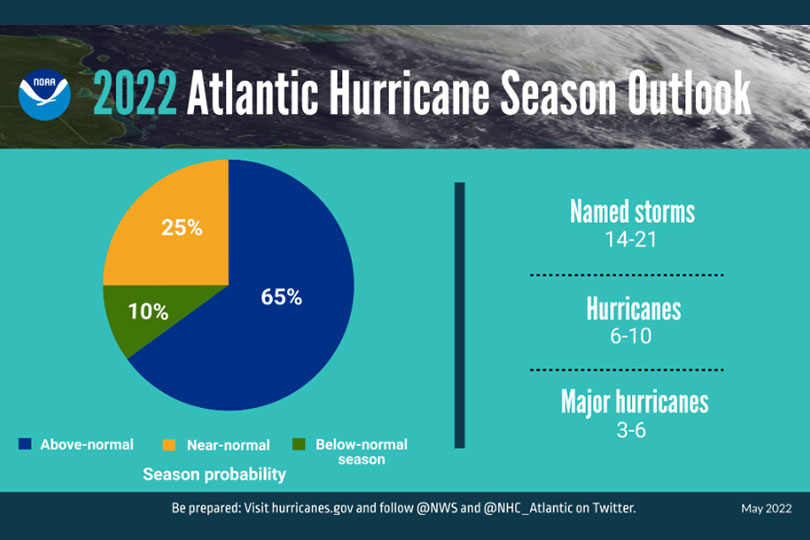Hurricane activity this year is predicted to be above-average, according to forecasters at the National Oceanic and Atmospheric Administration (NOAA). If predictions hold true, this year will make be the seventh-consecutive above-average hurricane season.
There is a 65% chance of an above-normal season, a 25% change of a near-normal season and a 10% change of a below-normal season, NOAA said.
Forecasters predict 14 to 21 named storms, six to 10 hurricanes and three to six major hurricanes.
Based on the Saffir-Simpson Hurricane Wind Scale, “major hurricanes” are Category 3, 4 or 5 and have sustained winds of 111 miles per hour or higher.
“As we reflect on another potentially busy hurricane season, past storms—such as Superstorm Sandy, which devastated the New York metro area 10 years ago—remind us that the impact of one storm can be felt for years,” NOAA Administrator Dr. Rick Spinrad said. “Since Sandy, NOAA’s forecasting accuracy has continued to improve, allowing us to better predict the impacts of major hurricanes to lives and livelihoods.”
The increased activity can be attributed to the ongoing La Nina that is expected to persist throughout the hurricane season, warmer-than-average sea surface temperatures in the Atlantic Ocean and Caribbean Sea and weaker tropical Atlantic trade winds.
For those living along the Gulf Coast and down along the Rio Grande Valley, it’s important to be prepared.
“The first thing is to determine your risk, know where you live relative to the coast, obviously, and what your degree of risk may be due to a hurricane,” Tom Bradshaw, meteorologist at the National Weather Service in Fort Worth, told the Texas Farm Bureau Radio Network. “Know where you’re going to go in case a hurricane warning is issued for your area. You want to assemble a disaster kit and have an emergency plan in place.”
Bradshaw noted one of the biggest threats that Texans face from tropical systems is inland flooding.
NOAA’s outlook is for overall seasonal activity and is not a landfall forecast.
Hurricane season, which started June 1, ends Nov. 30.

